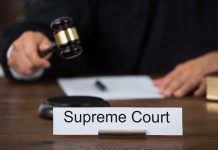
Former President Donald Trump unveils a sweeping plan to combat censorship and restore free speech in America, declaring it crucial for the nation’s survival.
At a Glance
- Trump announces initiatives to dismantle what he calls a “censorship regime.”
- Proposed measures include executive orders, legal reforms, and a digital Bill of Rights.
- Plan aims to prevent federal agencies from colluding to censor lawful speech.
- Trump pledges to revise Section 230 and break up the “censorship industry.”
- Initiative framed as essential for preserving American democracy and Western Civilization.
Trump’s Vision for Free Speech in America
In a bold move to address perceived threats to free speech, former President Donald Trump has unveiled a comprehensive plan to combat censorship and restore First Amendment rights in the United States. The initiative, part of his Agenda47 campaign, outlines a series of measures aimed at dismantling what Trump describes as a “left-wing censorship regime” that he claims is silencing Americans.
This alone puts DJT in company with the greatest U.S. presidents since Lincoln. The globalist project has laid siege to democracy and freedom across the globe. The USA is the final redoubt. President Trump just launched freedom’s counterattack. https://t.co/2brXEjTByg
— Robert F. Kennedy Jr (@RobertKennedyJr) November 9, 2024
Trump’s proposal includes signing an executive order to prevent federal agencies from colluding to censor lawful speech, banning federal funds from being used to label domestic speech as misinformation, and identifying and firing federal bureaucrats involved in censorship activities. The former president also plans to order the Department of Justice to investigate and prosecute parties involved in online censorship.
Revising Section 230 and Breaking Up the “Censorship Industry”
A key component of Trump’s free speech initiative involves revising Section 230 of the Communications Decency Act. This revision aims to ensure that digital platforms meet standards of neutrality and transparency. Trump also proposes breaking up what he terms the “censorship industry” and halting federal funding for related non-profits and academic programs.
“If we don’t have FREE SPEECH, then we just don’t have a FREE COUNTRY.” – President Donald J. Trump
The plan also includes enacting laws with penalties for federal bureaucrats who bypass constitutional rights and implementing a seven-year cooling-off period for former intelligence officials before they can join companies with access to U.S. user data. These measures are designed to address concerns about the revolving door between government agencies and tech companies.
A Digital Bill of Rights
In a move to modernize free speech protections for the digital age, Trump is proposing a digital Bill of Rights. This would include provisions for digital due process and user rights regarding content moderation on social media platforms. The initiative aims to create a more transparent and accountable online environment where users have greater control over their digital presence and the content they see.
Trump frames this fight for free speech as crucial not only for America’s survival but also for Western Civilization as a whole. He pledges to dismantle the current system of censorship if re-elected, positioning himself as a champion of First Amendment rights in the face of what he perceives as growing threats to freedom of expression.
Implications and Challenges
While Trump’s proposals have garnered support from those concerned about online censorship and the power of tech companies, they also face potential legal and practical challenges. Critics argue that some measures could infringe on private companies’ rights to moderate content on their platforms. Additionally, the implementation of such sweeping changes to digital communication laws would likely face significant opposition in Congress and the tech industry.
As the debate over free speech in the digital age continues, Trump’s initiative has reignited discussions about the balance between protecting individual expression and maintaining a safe and responsible online environment. The coming months will likely see intense scrutiny and debate over these proposals as they become central to Trump’s second term and the broader conversation about the future of free speech in America.















